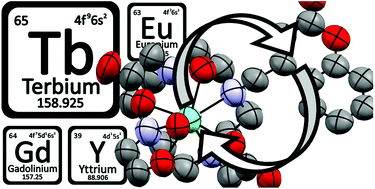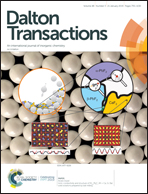Shining light on the excited state energy cascade in kinetically inert Ln(iii) complexes of a coumarin-appended DO3A ligand†
Abstract
Our understanding of the solution structure of the complexes between a coumarin-appended 1,4,7,10-tetraazacyclododecane-1,4,7-triacetate (DO3A) ligand and Eu(III), Gd(III), Tb(III) and Y(III) ions allows us to investigate the excited state energy transfer cascade that result in sensitised lanthanide centred luminescence, and we can do so in unprecedented detail. Spectroscopic data from solutions with ambient oxygen levels, without oxygen and solid solutions at 77 K unequivocally show that the simple model for the antenna principle is not valid. We find that the Tb(III) complex photophysics is determined by the non-emissive 5D3 state, not the emissive 5D4 state as usually assumed. This scrutiny of the energy transfer cascade in these antenna appended lanthanide complexes, show that detailed knowledge of solution structure and experimental photophysics are needed to rationalise the properties of lanthanide based dyes.



 Please wait while we load your content...
Please wait while we load your content...